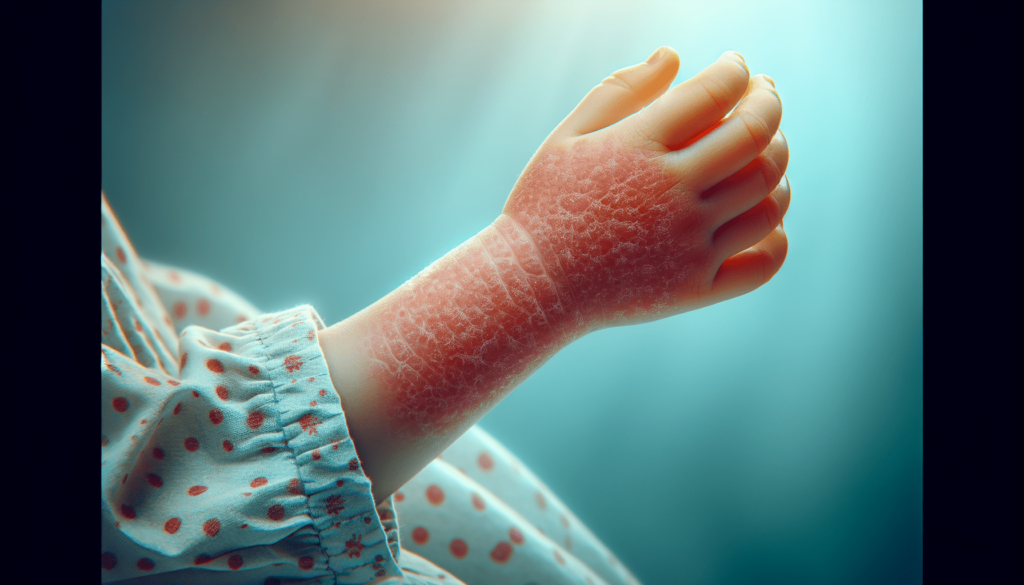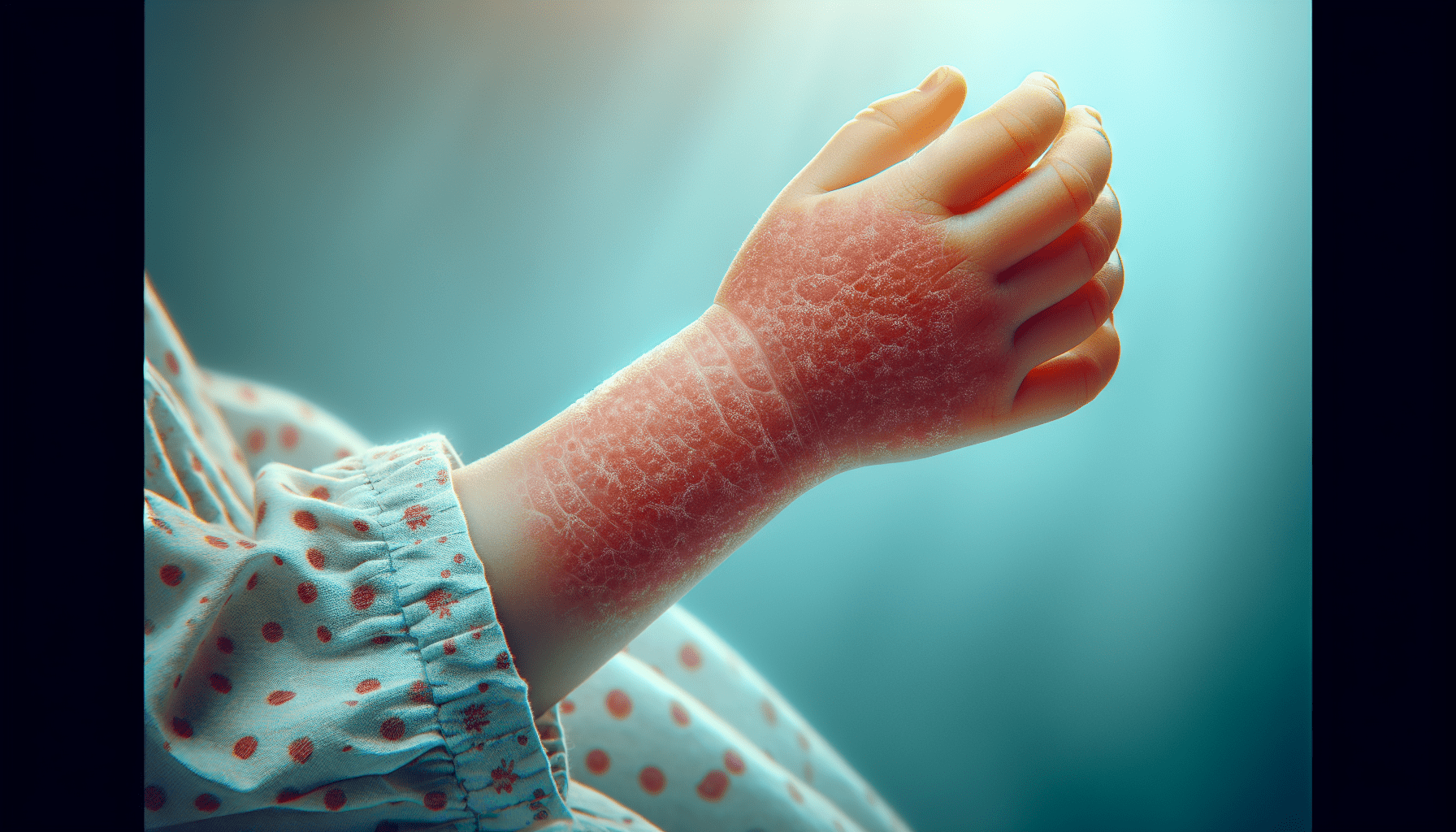Welcome to “Understanding Eczema and Allergies in Children.” This article dives into the causes, symptoms, and management of eczema and various allergies that commonly affect children. By learning more about these conditions, you can find effective ways to alleviate your child’s discomfort and improve their quality of life. From identifying triggers to exploring treatment options, you’ll discover invaluable insights to help your little one lead a happier, healthier life. Have you ever wondered why your child’s skin seems to flare up with redness and irritation seemingly out of the blue? If so, you’re not alone. Many parents find themselves puzzled and worried when their children display signs of eczema or allergies. Understanding these conditions is crucial to effectively manage and alleviate their symptoms, providing your child with comfort and relief.
Understanding Eczema and Allergies in Children
Dealing with skin issues and allergies in your children can feel like a daunting task, but with a bit of knowledge and the right strategies, you can significantly improve their quality of life. This comprehensive guide will cover everything you need to know about eczema and allergies in children, including causes, symptoms, treatments, and preventive measures.
What is Eczema?
Eczema, also known as atopic dermatitis, is a chronic skin condition that causes the skin to become inflamed, red, and itchy. It’s most common in young children but can occur at any age. The exact cause of eczema is not fully understood, but it is believed to be linked to a combination of genetic, environmental, and immunological factors.
Types of Eczema
Understanding the different types of eczema can help you identify and manage your child’s condition more effectively.
| Type of Eczema | Description |
|---|---|
| Atopic Dermatitis | The most common form, often associated with other allergic conditions. |
| Contact Dermatitis | Caused by contact with an allergen or irritant. |
| Dyshidrotic Eczema | Characterized by small, itchy blisters on the hands and feet. |
| Nummular Eczema | Appears as circular, itchy spots on the skin. |
| Seborrheic Dermatitis | Affects areas with lots of oil glands, like the scalp and face. |
Symptoms of Eczema
Eczema symptoms can vary widely from one child to another. Here are some of the most common signs:
- Red or brownish-gray patches on the skin
- Small, raised bumps that may leak fluid and crust over when scratched
- Thickened, cracked, or scaly skin
- Severe itching, especially at night
- Raw, sensitive, swollen skin from scratching
Causes of Eczema
The exact cause of eczema remains unknown, but several factors contribute to its development:
- Genetic Factors: Children with a family history of eczema, allergies, or asthma are more likely to develop the condition.
- Environmental Triggers: Exposure to certain environmental factors such as pollen, dust mites, and pet dander can trigger eczema flare-ups.
- Skin Barrier Issues: A compromised skin barrier can lead to moisture loss and make the skin more susceptible to irritants and allergens.
- Immune System: An overactive immune system may respond aggressively to minor irritants, causing inflammation.
Managing Eczema
Managing eczema involves a combination of treatments, lifestyle changes, and preventive strategies. Here are some effective methods:
Moisturizing
Keeping the skin well-moisturized is crucial in managing eczema. Use fragrance-free, hypoallergenic moisturizers and apply them several times a day, especially after bathing.
Medications
- Topical Corticosteroids: These are often prescribed to reduce inflammation and itching.
- Topical Calcineurin Inhibitors: Used as an alternative to corticosteroids, they help reduce inflammation.
- Antihistamines: Oral antihistamines can help control itching, particularly at night.
Bathing
Bathe your child in lukewarm water for about 10-15 minutes. Use mild, fragrance-free soaps, and apply moisturizer immediately after bathing to lock in moisture.
Preventing Eczema Flare-Ups
Preventing flare-ups requires identifying and avoiding triggers, maintaining a consistent skin-care routine, and making certain lifestyle adjustments.
- Identify Triggers: Keep a diary of your child’s symptoms and activities to help identify specific triggers.
- Clothing: Choose soft, breathable fabrics like cotton and avoid wool or synthetic materials that may irritate the skin.
- Temperature and Humidity: Maintain a comfortable indoor climate with moderate humidity levels to prevent the skin from drying out.
Allergies in Children
Allergies occur when the immune system overreacts to substances that are typically harmless, known as allergens. These can include foods, pollen, pet dander, dust mites, and mold. Allergies can manifest in various forms, such as hay fever, asthma, or allergic reactions to foods.
Common Allergies in Children
Children can be allergic to a wide range of substances. Here are some of the most common allergens:
| Allergen | Examples |
|---|---|
| Foods | Peanuts, tree nuts, milk, eggs, fish, shellfish, wheat, soy |
| Environmental | Pollen, dust mites, mold spores, pet dander |
| Insect Stings | Bees, wasps, fire ants |
| Medications | Penicillin, antibiotics |
| Other | Latex, certain fragrances |
Symptoms of Allergies
Allergy symptoms can vary based on the type of allergen and the individual child. Some common symptoms include:
- Respiratory Symptoms: Sneezing, coughing, runny or stuffy nose, and itchy, watery eyes.
- Skin Symptoms: Hives, eczema, or swelling.
- Gastrointestinal Symptoms: Stomach pain, vomiting, or diarrhea (common in food allergies).
- Anaphylaxis: A severe, potentially life-threatening allergic reaction that requires immediate medical attention.
Diagnosing Allergies
Diagnosing allergies can be complex and often involves a combination of medical history, physical examination, and specialized tests.
- Skin Prick Test: Small amounts of potential allergens are introduced into the skin to observe for reactions.
- Blood Test: Measures the presence and levels of specific antibodies to allergens.
- Elimination Diet: Removing suspected allergens from the diet and gradually reintroducing them to identify food allergies.
Managing Allergies
Allergy management involves avoiding triggers, using medications, and sometimes undergoing immunotherapy.
Avoidance
The most effective way to manage allergies is to avoid contact with allergens. This may involve:
- Keeping windows closed during high pollen seasons.
- Using dust mite-proof covers on bedding.
- Washing hands and face after playing with pets.
Medications
- Antihistamines: Help relieve sneezing, itching, and runny nose.
- Decongestants: Reduce nasal congestion.
- Nasal Corticosteroids: Reduce inflammation and alleviate nasal symptoms.
- Epinephrine Auto-Injectors: Essential for treating severe allergic reactions like anaphylaxis.
Immunotherapy
Immunotherapy, such as allergy shots or sublingual tablets, can help desensitize the immune system to specific allergens over time. This treatment is usually reserved for severe allergies or when avoidance and medications are not effective.
Living with Eczema and Allergies
Living with eczema and allergies requires ongoing management and support. Here are some tips to improve your child’s wellbeing:
Education and Awareness
Educate yourself, your child, and family members about eczema and allergies. Understand the importance of avoiding triggers and adhering to treatment plans.
Support Groups
Join support groups or online communities to share experiences, tips, and encouragement with other parents facing similar challenges.
School and Social Activities
Inform teachers and caregivers about your child’s condition and provide necessary medications and action plans. Ensure your child can participate in social activities safely.
When to See a Doctor
While mild eczema and allergy symptoms can be managed at home, you should seek medical advice if:
- Symptoms are severe or persistent.
- Over-the-counter treatments are not effective.
- Your child experiences difficulty breathing or swallowing.
- Signs of infection appear, such as fever, pus, or increased redness and swelling.

Conclusion
Understanding eczema and allergies in children can feel overwhelming, but with the proper knowledge and strategies, you can manage these conditions effectively. Remember, you’re not alone in this journey. With a proactive approach, appropriate treatments, and support, you can help your child lead a comfortable and fulfilling life. If you’re ever in doubt, don’t hesitate to consult with a healthcare professional to ensure your child receives the best care possible.
